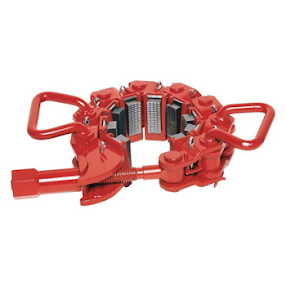A Comprehensive Guide to Torque Turn Systems and Dies and Inserts for Performance
Manufacturing and mechanical engineering require precision and efficiency. These goals depend on torque turn systems, dies, and inserts. Understanding these tools helps improve your operations in heavy machinery, automobile production, or other precision-intensive industries. This M-O-T handbook details torque turn systems, dies, and inserts' importance and uses.
Knowing Torque Turn Systems
Correct torque application in mechanical processes requires torque turn systems. These systems measure and control fastener rotational force to keep it within limitations. They avoid over- or under-tightening, which can cause mechanical breakdowns or inefficiencies.
Advantages of Torque Turn Systems
Torque turn systems improve mechanical safety and reliability. These devices prevent equipment damage and secure bolts by precisely managing torque. They also ensure uniformity throughout operations, improving quality and performance.
Key Torque Turn System Components
Torque turn systems have torque sensors, control units, and data-collecting systems. The torque sensor measures force and the control unit checks it for accuracy.
Torque Turn Systems Improve Efficiency
Torque turn systems are essential for mechanical efficiency and accuracy. Torque turn systems improve machinery longevity and performance in the automotive, aerospace, and construction industries by ensuring proper component assembly.
These devices detect torque with modern sensors and algorithms to give operators real-time feedback. This ensures every fastener is tightened to specs, reducing mechanical failures. Torque turn systems also cut manual torque measurement time and personnel expenses, improving manufacturing efficiency.
High-Quality Dies and Inserts Benefits
Manufacturing relies on dies and inserts to shape and mold materials. Quality dies and inserts are needed to make consistent, accurate parts, which protect the end product. These instruments cut, stamp, and mold metal, plastic, and composites.
Buying good dies and inserts has many benefits. First, they last longer and require fewer replacements, saving downtime. Second, precision-engineered dies and inserts ensure every part fits requirements, saving waste and boosting quality. The correct dies and inserts can also speed up production and increase output.
Fitting Torque Turn Systems to Applications
Versatility is a major benefit of torque turn systems. These systems can be tailored for varied purposes, ensuring excellent performance in many sectors. Adjustable torque, data logging, and tool and machinery integration are customization options.
The automotive industry uses customized torque turn systems to precisely assemble engines and transmissions, ensuring each component is properly connected. These technologies can meet strict airplane assembly safety criteria in the aerospace industry. Customizing torque turn systems for specific applications improves productivity and precision, giving organizations a competitive edge.
Why Dies and Inserts Need Regular Maintenance
Dies and insert maintenance is essential for longevity and performance. Clean, check, and store regularly to prevent wear and damage. Maintenance neglect can affect tool life, precision, and manufacturing costs owing to frequent replacements.
Routine die and insert examination detects wear and damage early, enabling repairs or replacements. After each usage, clean the tools to prevent debris and pollutants from affecting part quality. Stowing tools in a regulated environment prevents corrosion and physical damage. Businesses may maximize die and insert longevity and efficiency with frequent maintenance, assuring consistent and high-quality manufacturing.
Tech innovations in torque turn systems
The subject of torque turn systems is always changing, with new technologies appearing to boost precision and efficiency. Recent improvements include wireless torque turn systems, which reduce connections and increase application versatility. These devices transfer data in real-time using modern wireless protocols, giving operators quick feedback and control.
AI and machine learning algorithms in torque turn systems are another major advance. These technologies let systems learn from past operations, boosting accuracy and efficiency. AI-powered torque turn systems automatically modify torque settings to meet application needs, eliminating human error and optimizing performance.
Torque measurement tools are now more sensitive and accurate due to sensor technology advances. These sensors can detect very small torque fluctuations, allowing accurate tightening control. Torque turn systems will become even more important in manufacturing and engineering as technology advances.





Comments
Post a Comment